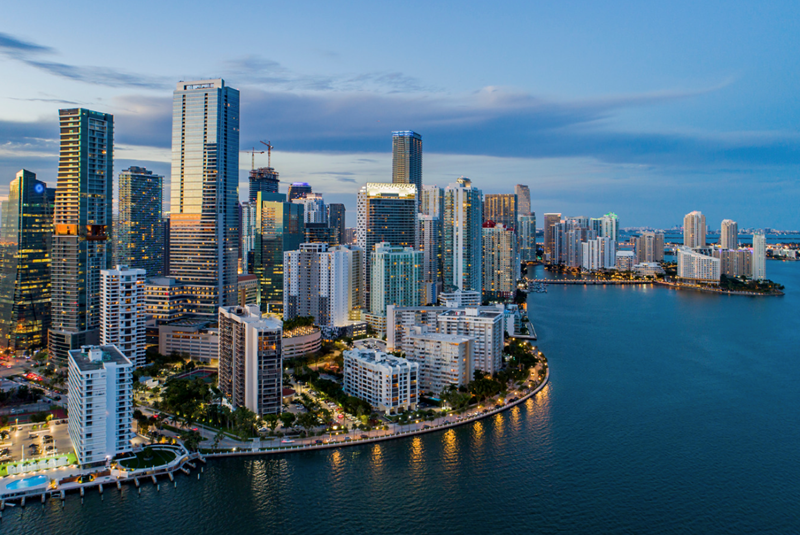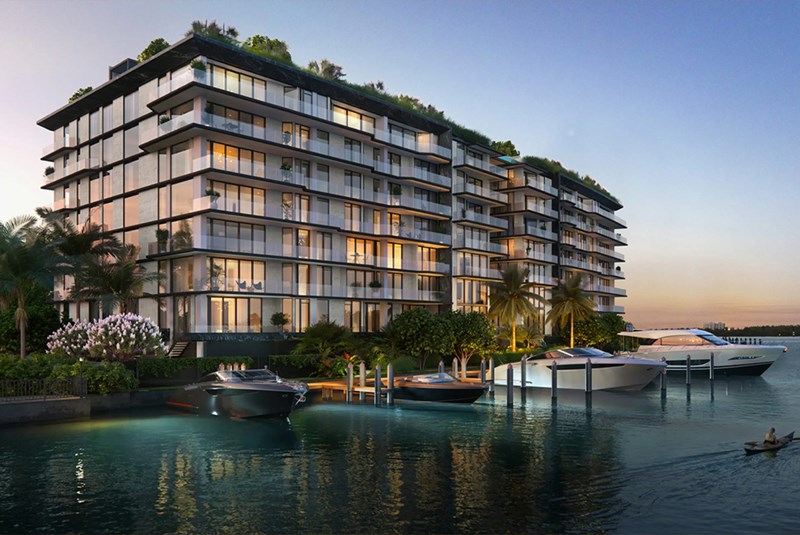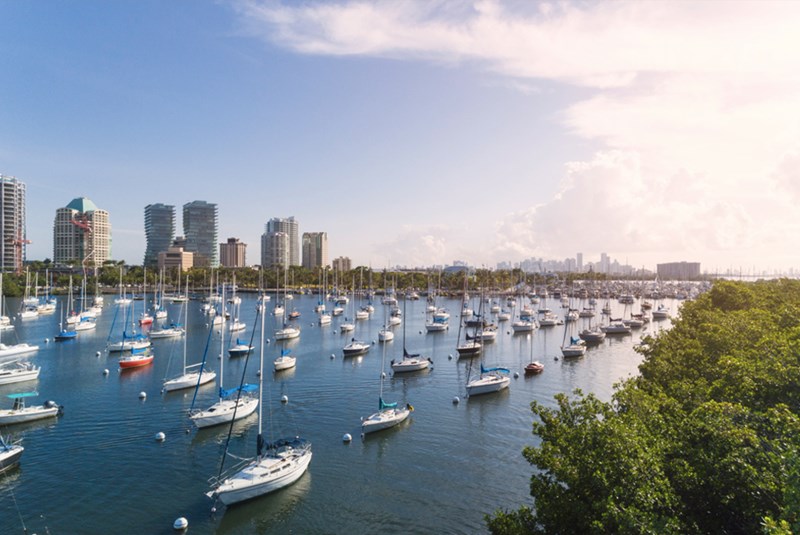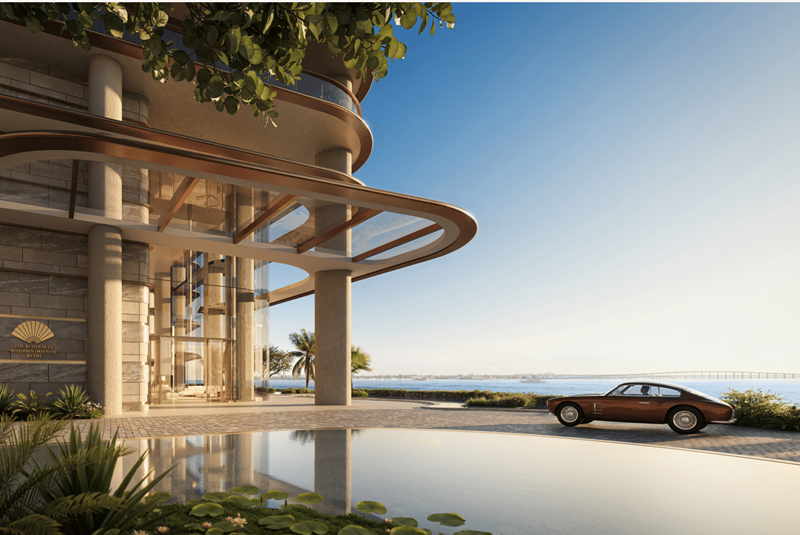Brickell Avenue Bridge Schedule, Traffic and Solutions -- All You Need To Know

Jun 07, 2021 June 07, 2021
Ever tried driving from Brickell to Downtown Miami for lunch? Most Miamians dread the thought of catching the dreaded Brickell Avenue bridge, a drawbridge that opens every hour or half-hour during non-curfew hours to allow river and traffic and boats to pass under.
* This article was updated on June 7, 2021
So what’s the problem? A big one!
When the bridge opens, it ends up turning the city into a parking lot. With the last two building booms, there’s been a sudden surge in Downtown population since 2010 that has not stopped, and hence, denser traffic. And with Brickell now one of Miami’s hottest neighborhoods, serving as Miami’s vital financial hub, dense residential condo neighborhood and go-to place for nightlife, travel to and from Brickell and Downtown Miami is unavoidable.
This is why almost every second year, the FDOT faces requests to place restrictions on opening the bridge for maritime traffic during rush hour or extending curfew hours. However, listen to the marine industry’s (Coast Guard or Marine-dependent facilities’) side of the story and you know how important the river route is for commerce and trade with the Caribbean. The working river supports a multibillion-dollar marine industry benefiting cargo ships, sports fishermen, tugs and pleasure craft owners.
But when the right of passage is exploited to let the growing number of pleasure craft (read superyachts) sail through is when the conversation takes a turn.
Current Brickell Avenue Bridge Curfew (Stoppage) Hours
On weekdays, Monday through Friday except Federal holidays, from 7 AM to 7 PM, the Brickell Avenue Bridge opens every half hour (on the hour and half-hour). However, in an effort to help the rush hour traffic in Downtown Miami and Brickell, the Brickell Avenue Bridge does not have to open to boat traffic between the hours of:
- 7:35 to 8:59 AM (Morning Rush Hour)
- 12:05 to 12:59 PM (Lunch Hour)
- 4:35 to 5:59 PM (Evening Rush Hour)
Only boats pushed by tugboats, government vessels, or in an emergency are allowed to pass during curfew hours. The bridge curfew hours are applicable on all weekdays, except Federal holidays.
While these curfew hours have helped, the traffic that now ensues when the bridge is up can delay drivers for more than 30 minutes, and creates massive congestion in some of Miami’s most densely populated neighborhoods. And these neighborhoods continue to grow.
Proposed Solutions for Brickell Avenue Bridge Traffic
There’s a huge laundry list of solutions that have been proposed over the years to solve the gridlock caused by the Brickell Avenue Bridge. Which of these are practical and which aren’t is something we’ll leave up to you to decide.
Latest Brickell Bridge Proposal: Elon Musk’s Electric Car Tunnel
Elon Musk’s proposal to build a tunnel under the bridge for electric vehicles isn’t just a spacey idea. Musk has had several meetings with Miami Mayor Francis Suarez, who has already visited similar tunnels under construction in Las Vegas by Musk’s Boring Company. And last month, in May, Suarez said the City began preparing bidding for the tunnel, which should be ready in three months.
While the initial concept was just for a tunnel between Brickell and Downtown, after seeing the tunnels in Las Vegas, Musk and Suarez are discussing options for the tunnel to run from Brickell to Little Haiti, with several stops in between, including the Miami World Center, Wynwood, and the Design District. The tunnel uses electric vehicles, Teslas, to shuttle passengers between stops.
You can see Mayor Suarez’s press conference on the potential underground system here.
Last week, @MiamiMayor Francis Suarez met with @boringcompany to discuss an inter-city transit system in Miami. Watch below to learn more on this new innovative way of transportation. pic.twitter.com/tGXcGDeASU
— City of Miami (@CityofMiami) March 22, 2021
According to Mayor Suarez, Musk believes the project could be completed in as little as 6 months and for far less than any previous tunnel concepts -- just about $30 million. To compare, in 2018, according to the Miami Herald, Miami-Dade County transit officials estimated a $900 million price tag for a roughly 2-mile tunnel under the river that would take about four years to build. Previous tunnel proposals put the cost as high as $1.3 billion.
Moreover, Suarez also believes Federal funding can be used to move the project along, piggybacking off of the Las Vegas project. However, recent testing of the Las Vegas tunnel revealed it was not as efficient as promised, with cars getting backed up.
Watch this space for more updates on the Brickell Bridge and possible solutions to solve the city’s traffic problems.
Past Brickell Avenue Bridge Traffic Proposals
Extend curfew hours during rush-hour – Florida’s Department of Transportation has suggested many times to extend curfew hours in the morning and evening by half an hour each to ease traffic overhead. However, the Coast Guard shot down the idea in June 2017, releasing a study that said the extension would have little to no effect on the traffic situation and would rather increase the amount of time the bridge has to be raised for backed-up marine traffic. The Coast Guard cited that the bridge could still open during curfew hours, as Federal law mandates opening on demand for vessels owned by the government, tugboats, tugs with tows and any craft in distress.
Solutions proposed by the DDA and FDOT – After the above recommendation was rejected, the DDA and FDOT collaborated on an 11-point plan to deal with the congestion. Some of the proposed solutions include:
- Strictly enforcing curfew rules by keeping a check on bridge tender logs with cameras and automating handwritten logs.
- Installing pedestrian gates to block people from delaying the bridge opening sequence.
- Installing smart signage on the river and connecting streets, alerting drivers and boaters about impending openings.
- Controlling and synchronizing street lights to help maneuver traffic better.
Keep all lanes leading to and around the drawbridge open – In June 2018, Chairman of the Miami River Commission, Mr. Horacio Stuart Aguirre brought to everyone’s notice that 66% of the travel lanes surrounding the Brickell Avenue Bridge were inoperative due to one construction project or another. This is mainly due to plumbing infrastructure improvements, new building construction, streetscape renovations, etc. Minimizing the simultaneous construction projects around town to keep more lanes free can help relieve some of the overall feeling of congestion, although it doesn’t directly improve the bridge congestion issue.
Build a tunnel – Citing the success of the PortMiami tunnel, many (including the Miami River Marine Group) have suggested building a tunnel to ease the load off Brickell Avenue Bridge. However, a billion-dollar construction bill is the biggest roadblock in the implementation of this idea.
Cruise overhead - One of the most readily available solutions to the whole Brickell Avenue Bridge situation is to leave your car at home and take the MetroRail or MetroMover to avoid taking the drawbridge altogether. With the expansion of the TriRail and Brightline, those lucky enough to be situated along these public modes of transportation should consider them as an option and save themselves a ton of time and hassle.
Take the I-95 - In case leaving your car is not an option, try taking the I-95 to avoid the bridge altogether. While this is not a permanent solution, it is a viable alternate to get from Downtown to Brickell.
Brickell Avenue Bridge – A Timeline
1929 – Brickell Bridge is built 16 feet above water with two lanes connecting Downtown
1980s – Complaints about frequent bridge openings make way for a new and improved bridge
1995 – New Brickell Avenue Bridge arrives higher and wider at a height of 24 feet with five lanes (sixth added later)
1999 – Brickell and Downtown get busier and openings are poorly coordinated. Now the river bed is proposed to be lowered.
2008 – The Miami River is dredged at $89 million to a uniform 15 feet from previous 9 to 11 feet
2009 –Till date – Population, business and condo boom calls for new, permanent solution
Any other ideas on how the city can tackle this age-old situation?
Share your thoughts with us
Your Miami Condo Awaits
Recent Posts








